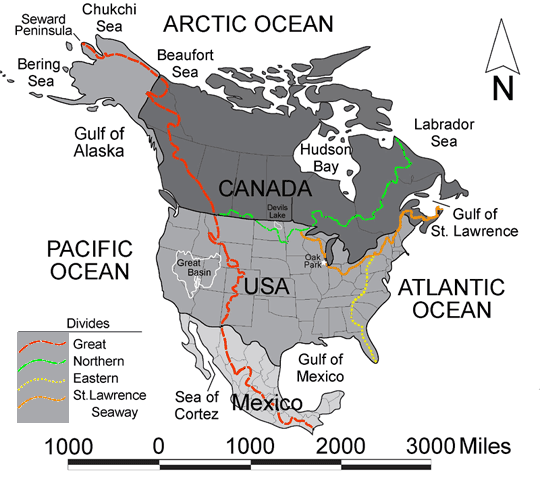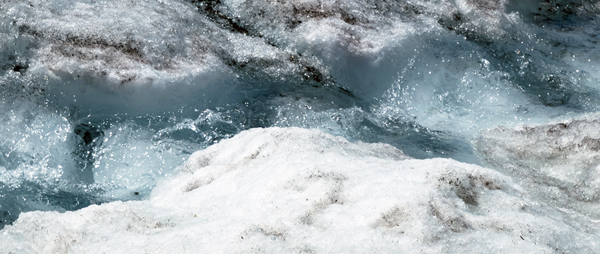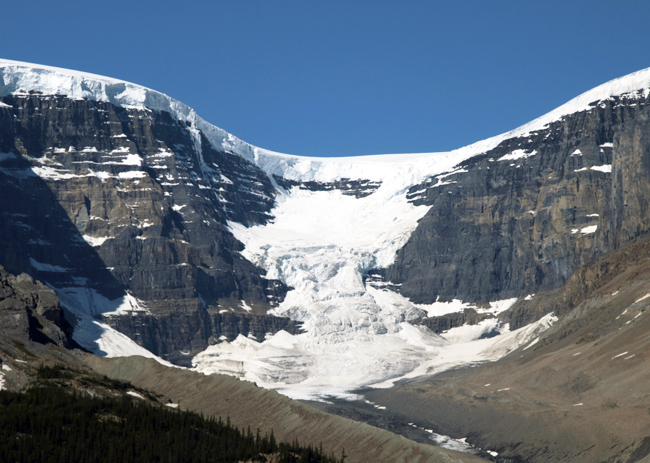Triple Divides
Today, triple divides. The University of Houston's College of Engineering presents this series about the machines that make our civilization run, and the people whose ingenuity created them.
A recent trip to the Canadian Rockies has left me thinking about continental divides. One such divide runs from Panama, up through Mexico, along the American and Canadian Rockies, and finally curves across northern Alaska.
All rain and snowfall west of that divide eventually finds the Pacific Ocean. Things are more complex on the inland side. Water in Mexico and the US generally runs into the Gulf of Mexico.
But another continental divide runs across southern Canada from Labrador to the Canadian Rockies. North of it, water runs off into the Arctic Ocean. From Minnesota eastward, water on the south side finds its way into the Great Lakes, the St. Lawrence Seaway, and the Atlantic. Between Minnesota and the Rocky Mountains, water runs south into the Gulf of Mexico.
And the United States has two more continental divides. One runs up from the tip of Florida, along the Appalachians to central Pennsylvania. One side drains into the Gulf, the other into the Atlantic. The other American divide skims across our northeastern border from Minnesota to New England. Its water drains north into the St. Lawrence and south into either the Gulf or the Atlantic.

Look at all this on a map, and we see three places where continental divides intersect -- points where a raindrop has to decide which of three oceans it might go to. One of these points lies near the Pennsylvania-New York border. Another is near Hibbing, Minnesota. Neither of these triple divides is very well defined. You'll find no markers on them.
But the third intersection lies in tourist country where geography is far more dramatic and identifiable. The northern divide meets the Rocky Mountain divide at aptly-named Triple Divide Mountain in Montana's Glacier Park.
The plot thickens when Canada claims a fourth triple divide. The place is the Snow Dome, just above a glacier in the Canadian Rockies. Its water drains into the Columbia River and the Pacific and into the MacKenzie River and the Arctic Ocean. But it also finds a third river system that empties into Hudson's Bay. And Hudson's Bay can be considered part of either the Arctic or Atlantic Oceans.
While we're talking about such flukes, here's another one: In the middle of the western US watershed lies the Great Basin, a dry region including western Utah, most of Nevada, and parts of three other states. It's our largest endorheic basin. That's a region water cannot leave. What little rain or snow falls upon it simply evaporates away without ever reaching an ocean.
All this complex water movement became very real to me two weeks ago. That's when I dipped a cup into the glacier melt leaving Snow Dome. I drank some of that crystal pure water and watched the rest flow away. This particular rivulet parted from snowflakes that'd fallen very nearby it to begin its own long journey to faraway Hudson's Bay.

The melt of Athabaska Glacier beginning its journey to Hudson's Bay
I'm John Lienhard at the University of Houston, where we're interested in the way inventive minds work.
See the Wikipedia article on Continental Divide of North America. The map (above) of North American divides is courtesy of Wikimedia Commons. Photos by J. Lienhard.

Snow Dome Glacier as seen from Athabaska Glacier in the Columbia Ice Fields. The actual Dome lies beyond the rim at the top of the photo. It is located on the British Columbia/Alberta border. Snow Dome drains into the Pacific and Arctic Oceans as well as Hudson's Bay